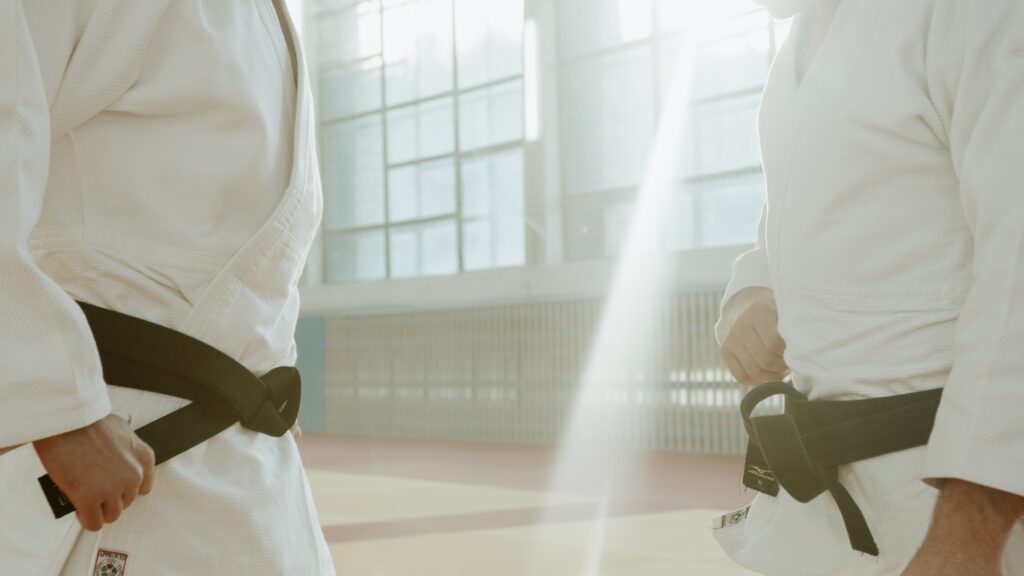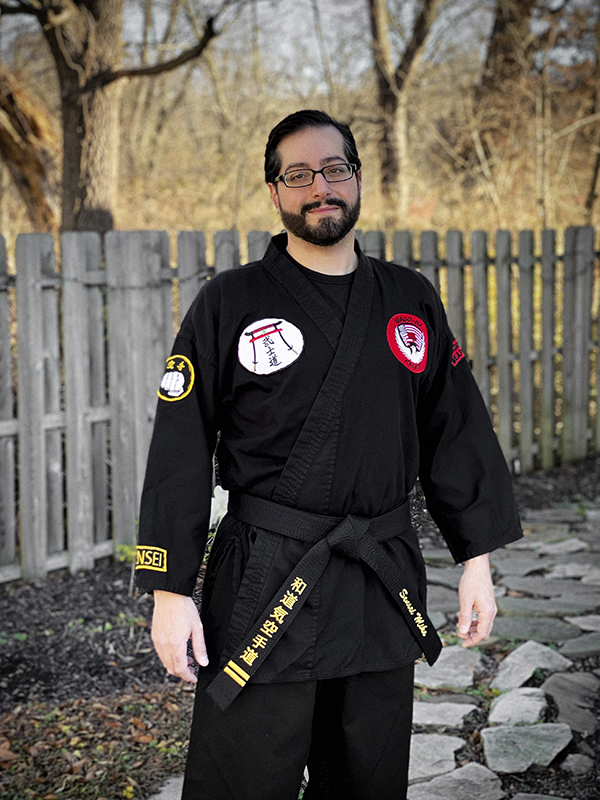The Karate Gi

The karate gi is one of the most iconic uniforms in martial arts. They come in a variety of styles, materials and colors and may also be adorned with patches, stripes, symbols and other insignia. But where did the karate gi originate and why do we still wear this traditional attire?
Originally inspired by the Japanese kimono and similar garments, Jigaro Kano introduced the “judogi” as the official uniform for his art of Judo. Similar to modern Jiu-Jitsu gis, they were made of a heavy weight cotton material that can withstand the intensity of grappling. Inspired by Judo’s uniform, Gichin Funakoshi introduced a light weight version of the gi (along with Judo’s use of a colored belt rank system) to his Shotokan Karate students. This “ancient tradition” only began in the early 1900’s when karate was being officially introduced to mainland Japan.
Today karate gis are available in many variations to suit the practitioner’s needs. Heavy weight gis still exist, there are competition versions for both sparring and kata competitions and lighter weight fabrics are often used by students and for daily dojo practice. Club insignias and patches are often used to signify rank, affiliation and accomplishments of the kareteka. An example of this is the Bushido patch worn by Wado Ki Karate practitioners, as well as the use of a black gi for those who have reached the rank of Shodan, and the use of a white top with black pants being reserved for master’s of the art.
Since the introduction of the karate gi there have been many innovations in sports gear. Why not practice karate in more modern compression garments, sweat suits, gym shorts and similar contemporary attire? A strong canvas gi is still an ideal choice of clothing when practicing or competing using grappling and throwing techniques. A t-shirt will just not hold up to that level of stress and abuse.
A light or middle weight gi may be a great choice for someone when practicing kicks, stretches and acrobatic movements while training. In addition to being breathable and easy to move in, wearing a gi in a school or dojo also provides not only a uniform look for the students, but as stated earlier it is a great way to display personal achievements and club affiliations.
I generally wear my black gi with a Wado Ki patch set during more formal situations like teaching, demonstrating or testing. My heavyweight gi is a must when grappling but I also have a variety of colors and styles that I enjoy wearing during private practice as well.
Wearing a gi is something I only do when I am practicing karate. I don’t lounge around the house in one, or wear one to head out to the grocery store. In that sense it is a very specialized article of clothing. My Wado Ki gi has a very personal connection for me, but when I am training outside of that circle I usually opt for a traditional white gi.
Very rarely however is someone attacked wearing a gi, barefoot and on a nice smooth floor! It is also important, and highly encouraged to practice and drill your self-protection techniques under pressure with a resisting partner in a wide variety of locations, terrains, clothing and footwear. Denim jeans, heavy steel toe boots or even high heels and a cocktail dress might be more appropriate training gear depending on what (and how) you are practicing that day.
What is your preferred training attire? Let me know on Facebook!
-Sensei Mike

Michael Hall
2nd Degree Black Belt
